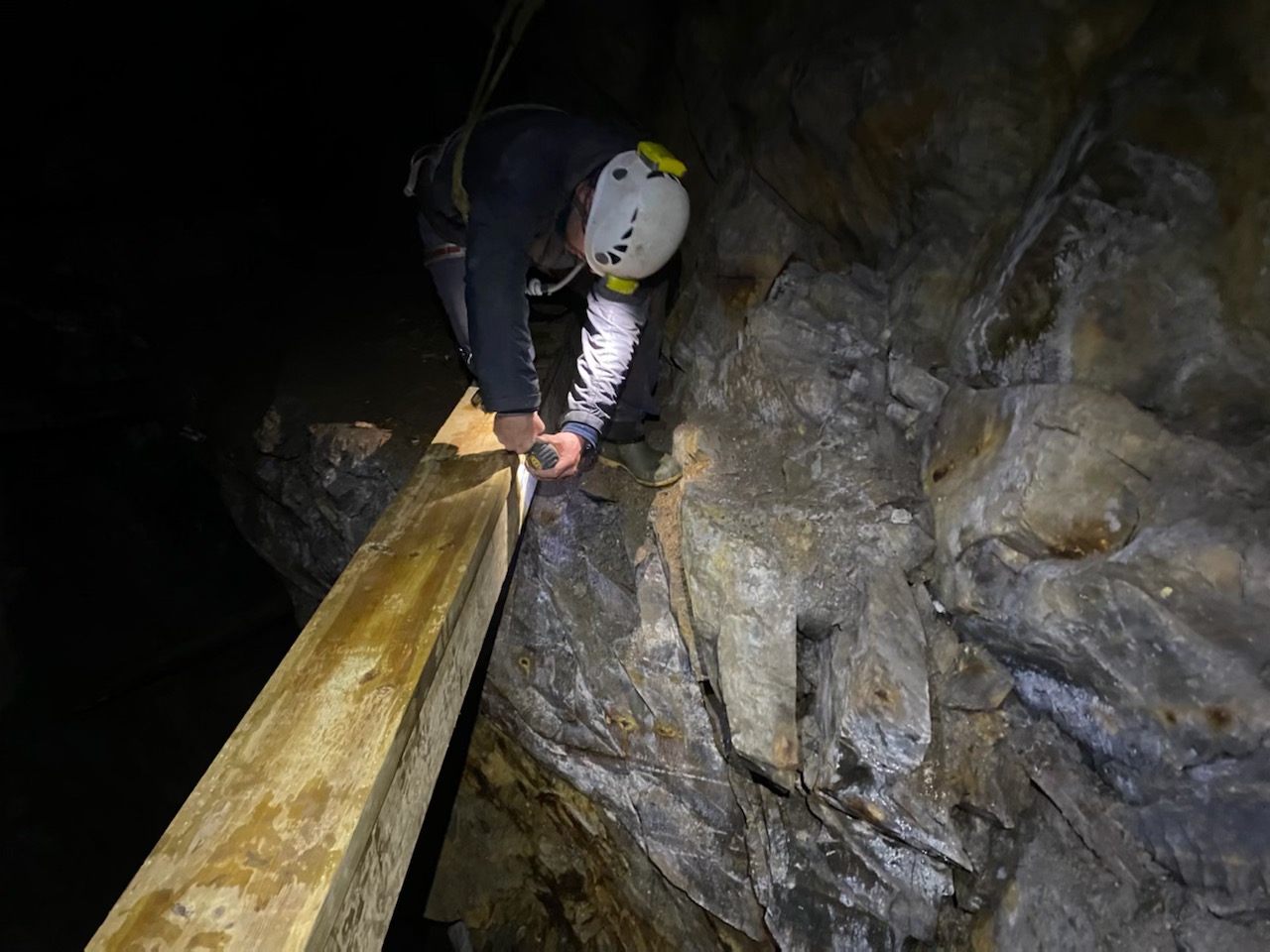A few months ago I sent the rope we’ve been using to manage the short traverse to the start of the tyrolean in Rhiwbach to the BCA for testing. The rope had been in place for a little over 2 years. As well as the used rope I also retained a unused length of the rope so we could compare the used and unused rope.
Here’s the results…
Hi
You sent me three ropes. I have put the BCA hand line experiment rope to one side awaiting other ropes from that experiment to test. I took your other two samples and have just tested them. I took the unused length and cut it into two samples labelled AB and BC. I took the used sample and cut it into 3 samples labelled DE, EF and FG, see photos. So end G was by the broken sheath in the used rope.
| Sample | Drops Survived |
| AB | 15 |
| BC | 12 |
| DE | 11 |
| EF | 10 |
| FG | 15 |
All samples broke on the following drop. FG was subject to a delay during testing (my winch line almost broke and needed replacing) which might go towards explaining its higher number of drops survived. But I do not think the results justifying claiming there is a difference between the ropes.
I define ‘broke’ as the rope not arresting the test mass’s movement. I use this definition because the ropes did show a peculiarity in behaviour which I have seen a few times in large diameter rope.
For sample AB, I noticed damage in the sheath as it came out of the knot after drop 12. In drop 14, the sheath parted exposing the core. (I did not think to count the number of intact cords.) After drop 15 I counted 10 intact cords (out of 16). It broke on drop 16.
For sample BC I noticed damage in the sheath as it came out of both knots after drop 9. In drop 12, the sheath parted exposing the core and I counted 12 intact cords (out of 16) after the drop. It broke on drop 13.
For sample DE the sheath broke on drop 10 and I counted all 16 cords intact after the drop. After drop 11, I counted 14 cords intact. It broke on drop 12.
For sample EF I noticed damage to the sheath after drop 8. The sheath broke during drop 10 and after the drop I counted 13 cords intact. It broke on drop 11.
For sample FG, I noticed damage to the sheath as it came out of both knots after drop 12. More damage to the sheath was observed at the bottom knot following drop 14. During drop 15 the sheath broke and after the drop I counted 9 cords intact. All bar 2 cords broke in drop 16. Although these two cords remain connected to both sides of the sample, the length is such that I think they must be broken somewhere within the intact sheath.
I have to admit I do not usually look for damage at the point where the sheath on the active rope exits the knot so I can’t say if the above observations were timely or comprehensive. But I do recall seeing this before on 11mm ropes. Perhaps I should do it as a routine. From memory, separate sheath breakage is unusual for smaller diameter ropes. Usually and certainly for thinner ropes, the sheath and cords break simultaneously. I hesitate to suggest but possibly one might examine the knots on installed ropes to check for such damage before use as a possible indicator of prior abuse. I think I would have to do a wide range of tests to build up confidence to say that such damage always occurs well before break. And I also think it is only a feature of large diameter rope which is in good condition. As it happened I also tested two samples of supposedly 12mm rope in the past few days which broke as normal (having survived 3 and 6 drops) with no sheath breakage.
I did not bother to take photos of the damage; instead I thought I would send the rope back to you. It is currently drying and with a bit of luck I will post it on Monday.
I should add the tests was conducted using a wet 0.8m overall length sample and used a Fall Factor 1.0 drop each time.
BS EN 1891:1998 requires that a Type A SRT rope can survive at least 5 drops using a 2m long sample. However this test is done on a specially conditioned dry rope. As wetting the rope will reduce the number of drops survived by around a factor of two, I conduct tests using a rope which has been immersed in water for at least two hours. But the reduced length of the samples I use to test do not impart the same impact on the rope. Some work suggests this over estimates the drop survivability of the rope.
BCA is not able to offer advice on the implications of these results, but if you want clarification do ask.
Regards
Bob


